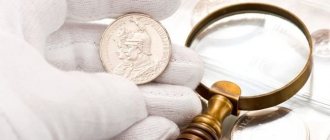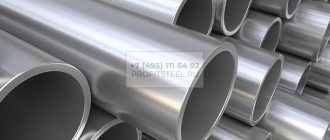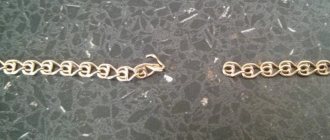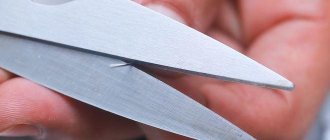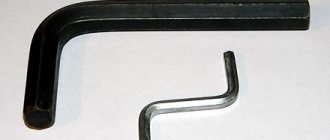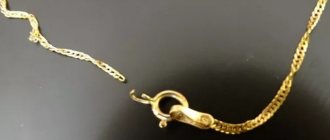Platinum is one of the precious metals. The first mentions of it are found in documents dating back to the 16th century. In Russia, the first deposit was discovered at the beginning of the 19th century. This chemical element is considered rare and is not cheap. It happens that counterfeits made from cheaper materials are sold under the guise of precious metal. There are ways to determine platinum at home.
Product Inspection
Nowadays many products can be ordered in online stores. Such purchases are usually significantly cheaper and can be delivered directly to the buyer's home. Jewelry is no exception. However, with this method of purchasing, the risk of purchasing a fake increases. To reduce it, experts recommend buying expensive jewelry in jewelry stores.
Self-respecting companies sell jewelry with a special tag . It is made of thick cardboard. The tag must indicate the product article, sample, and weight. Such a label is attached to the jewelry with a thread with a metal seal, on which there is an imprint of the manufacturer. Some jewelry comes with special certificates, although this requirement is only required for items with stones.
A platinum product must have a hallmark. Jewelry made from this metal can be graded 850, 900, 950 or 999. The markings must be clear and easy to read.
If the numbers are not clearly stamped or do not meet the standards, there is a high probability of fraud. It is better to refuse such a purchase immediately.
Next you need to carefully examine the decoration itself. Typically, genuine platinum products have a very high price and no less high quality. The best jewelers work with this metal, so there are no flaws or visible defects on rings or chains. If the intended purchase looks like a hastily made craft, it is most likely counterfeit.
The size of the product is also important. Real platinum jewelry is not big and bulky - the metal is too expensive for that, so the proposed massive item at an unusually low price is a deliberate fake.
Table: comparative analysis of properties
How to distinguish silver from platinum? The differences become obvious when you look at the characteristics of the metals individually:
| Criterion | Silver | Platinum |
| Color | Silver | Silver |
| Density | 10.5 g\cm3 | 21.09-21.45 g/cm3 |
| Melting temperature | 962 oC | 1768.3 oC |
| Inertia | High | High |
| Strength | Average | High |
| Fusibility | Low melting material | Refractory material |
| Anti-corrosion properties | Not subject to corrosion | Not subject to corrosion |
| Thermal and electrical conductivity | The highest rates among all known elements | Averages |
| Antibacterial properties | Available | Not available |
| Hypoallergenic properties | May cause allergies because it is almost never used in its pure form | Hypoallergenic |
| Investment value | Suitable for investment | Suitable for investment |
| Scope of application | Chemical industry, jewelry industry, photography, coinage, mirror manufacturing, medicine, shipbuilding, space industry, dentistry, radio components | Chemical and oil refining industries, jewelry, dentistry, medicine, coinage, mirror manufacturing, radio components |
| Price | Low, accessible to wide segments of the population | High |
| Marking | Samples available: 800, 830, 875, 925, 960, 999. Information about the product must be written inside the “barrel” | Samples available: 850, 900, 950, 990, 999. Information about the product must be inscribed inside the octagon. |
| Popularity, demand | High | Average |
Color
Of course, these two metals are very similar visually. They have the same shade, but platinum is lighter than silver, has a more pronounced shine, and does not fade over time.
Silver earrings
Density
Under normal conditions, the density of platinum is 21.09-21.45 g/cm3. This indicator makes the element refractory and heavy.
The density of lunar metal under normal conditions is 10.5 g/cm3, it is lighter than lead, but heavier than copper.
Melting temperature
The “Queen of Metals” melts at an extreme temperature of 1768.3 °C.
Physical methods
Here are several available methods that do not require special professional knowledge or the use of complex equipment:
- It is worth paying attention to the color of the metal. Silver has a darker and dull hue, platinum appears lighter and has a bright shine. In addition, it does not darken or fade even during long-term storage.
- Compare mass of products. If you pick up jewelry made of platinum, it will be much heavier than the same thing made of silver. For comparison, you can hold in your hands rings or earrings of approximately the same size, made from these two elements. If the jewelry is too small and it is not easy to determine the weight, you can use a pharmacy scale. Theoretically, the item could be made from an alloy of silver with another metal that has a higher density. However, such materials have a high cost, so producing such fakes is simply pointless.
- You can take the product in your hands and hold it in your clenched palm for about a minute. Platinum has low thermal conductivity and will remain cold after such a test. Products made from other metals will heat up much faster from the heat of human hands.
- A long-known method is the “tooth test.” Platinum has such a high density that it is impossible to leave scratches or teeth marks on it. Silver is a softer material; traces of any mechanical impact may remain on it.
- The density of a product can be determined by placing it in a container of water and calculating the volume of liquid displaced by it. This number must be divided by the weight of the decoration. For platinum, the resulting value should be 21.45. If the indicator is approximately 10.5, the item is made of silver.
- Platinum is refractory and is not afraid of high temperatures. It will not melt and will not change its color, even if you bring it to the open flame of a gas burner or lighter. A genuine product made of noble metal can even be put on your finger after such an experiment, but a silver ring will heat up and can cause a burn.
Platinum as a catalyst
This expensive metal, in addition to jewelry, has a very wide range of applications in other areas. For example, in technical applications it is used as a catalyst. It produces nitric acid. Platinum catalysts accelerate many chemical reactions, which is why it is also used in the production of sulfuric acid. In 1821, a chemist from Germany discovered the property of platinum catalysts to accelerate the process of converting wine alcohol into wine vinegar without exposure to high temperatures. At the same time, he noted that nothing happens to the metal itself. He also found out that a mixture of oxygen and hydrogen, when interacting with platinum black or platinum sponge, causes combustion. And due to the active release of heat, an explosion occurs. Thus, he invented a means of making fire before matches were invented.
The world's first platinum catalyst was produced in the 60s of the last century. It was a dehydrogenation catalyst.
Platinum is also used as a catalyst in other industries. This:
- Oil refining industry, where it is also used as a catalyst;
- Electrical engineering sector of production. It is used for the production of various sensors, electrical appliances, contacts, devices where high precision is required;
- Automotive industry. In this case, platinum is used as a catalyst;
- Space industry. Electrodes of fuel cells in spacecraft are manufactured
- Medicine. All surgical interventions are performed with platinum instruments; metal is also used in dentistry, cardiology, and for the manufacture of prosthetic parts
- Glass. Metal is used to produce high-quality optical devices. They also produce fiberglass and equipment for the production of premium quality glass.
- Chemical instruments.
How to extract platinum from a catalyst
Many resourceful people, knowing about the great value of the metal, know how to extract platinum from a catalyst and use it. Most often, platinum catalyst can be found in the automotive industry. It is from such a catalyst that the precious metal is most often extracted. An auto component filled with ceramics or metal looks like a honeycomb, and its upper part is coated with precious metal. It could be platinum, rhodium or palladium. This is necessary in order to reduce the level of toxic substances released during vehicle operation.
Resourceful people, knowing about this deposition, use auto catalysts to extract the noble metal. To extract tolls, two methods are used:
- leaching;
- "aqua regia"
The leaching method is most often used. To carry it out you will need nitric and hydrochloric acids. Due to the fact that the auto catalyst is made of ceramic or aluminum, this complicates the leaching process, since the ceramic or metal reacts with acids and oxidizes. This results in the loss of some platinum. Therefore, this method requires several catalysts.
First, the catalyst is soaked in a solution of hydrochloric acid. Then it is heated and, when vapor appears, oxidizing agents are applied.
Chemical methods
If the authenticity of a piece of jewelry is in doubt, you can check it using chemical agents . Due to their natural properties, all metals react differently.
The simplest reaction, which is easy to carry out at home, is a test with hydrogen sulfide. To do this, you will need to take a stale egg and place the product on it.
If the item is made of silver, the metal will react with hydrogen sulfide, which releases the egg and turns black. Platinum does not enter into such an interaction and its color during this experiment will remain the same.
There are other ways to determine the authenticity of platinum using chemicals:
- You can drop an alcohol tincture of iodine onto the surface of the platinum. At the same time, the liquid will retain its dark color. The more saturated it is, the higher the sample of the material under study.
- When interacting with liquid ammonia, most metals become covered with a black coating. Platinum is an exception in this sense. This feature can be used to determine the authenticity of the material.
- The method of distinguishing platinum from other metals using aqua regia is unsafe and is not advisable to use at home. However, it does exist and in some cases allows you to determine whether the purchased jewelry is actually made of platinum. The term “regia vodka” means a mixture of 3 parts concentrated nitric acid and 1 part sulfuric acid. Almost all metals dissolve in this composition, but it does not affect platinum. Please note that the solution must be taken cold. If you heat a mixture of acids, it can even dissolve platinum.
Criteria for choosing platinum products when purchasing
Of course, no one will carry ammonia or, especially, a mixture of acids with them when purchasing a platinum product. How can you check that the seller is offering original jewelry? It goes without saying that the first thing you should pay attention to is the stamp on the reverse side of the product. Every self-respecting manufacturer must put it on all jewelry.
You can do a test with a magnet. All noble metals are immune to its power. However, this method does not guarantee 100% results, because silver will also not be attracted.
Platinum test
In a store, you can weigh a gold product on one palm and put platinum on the other. Whatever is heavier will be the metal you are looking for. If you still have doubts about the originality of platinum, it is better to make a purchase in the presence of a specialist or someone who is at least theoretically versed in the selection of such things.
Other verification options
Almost all noble metals are immune to the effects of magnets. This property can be used for testing. If the item you purchased is attracted to a magnet, it is most likely made of steel. There will be no platinum in such jewelry or it is contained in a minimal amount.
You can conduct another relatively simple experiment to determine the authenticity of platinum at home. It is quite interesting and will allow you to check the real nature of the material from which the jewelry is made. To carry it out you will need:
- tin can;
- concentrated solution of table salt;
- battery.
Salt water is poured into the jar and the product is lowered. Then the supposed platinum is connected to the positive pole of the battery, and the wall of the tin container is connected to the negative pole. If the item being tested is actually made of a noble metal, chlorine will begin to release from the solution. It can be identified by its characteristic pungent odor. The liquid will remain transparent. If there is counterfeit in the container, the solution will become cloudy and sediment will fall to the bottom of the jar.
The most reliable results can be obtained by an expert who can distinguish platinum from silver. It is unlikely that it will be possible to repeat the tests used by a specialist at home.
General characteristics of noble metal
I learned about platinum back in the 18th century. The first deposit was discovered in Russia. This expensive precious metal is found in nature ten times less often than gold, which is why it is nicknamed the “queen of metals.” Platinum has a high density, excellent wear resistance and resistance to corrosion. The metal feels heavier to the touch than other alloys. The ratio of the percentage of pure substance is 85-95%. Thus, it turns out that platinum products consist of almost pure metal. The impurities are iridium and osmium. Platinum products do not break, bend or tarnish over time. This is another plus to all the other advantages of white metal.
Despite how long ago platinum was discovered, it has only become popular in our time. These raw materials are used to make beautiful jewelry in the form of rings, earrings, chains, pendants and thin necklaces. They produce only small-sized products, because... massive items will be very expensive, and not everyone can afford it. For example, a 5 gram ring will cost about 1500-2000 thousand dollars.
What does platinum look like?
Under the guise of noble metal, counterfeits made from cheaper raw materials are increasingly being sold. There are ways to distinguish platinum from non-precious material at home.
Experience with table salt
This method of determining platinum will appeal to those who love experiments. Conduct the experiment as follows:
- Pour concentrated brine solution into a canning jar.
- Dip the product into the liquid.
- Connect the decoration to the plus of the battery, and the jar itself to the minus.
- Study the results of the study.
If a precipitate has formed in the solution and the liquid has become cloudy, then this is 100% counterfeit. After real platinum, the solution remains clear, but as a result of the reaction, chlorine is released. You will recognize this volatile substance by its characteristic odor.

